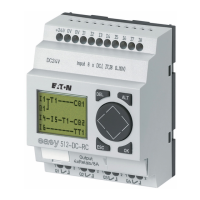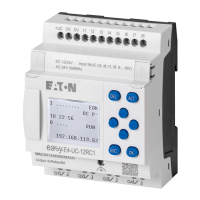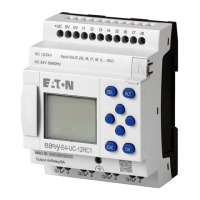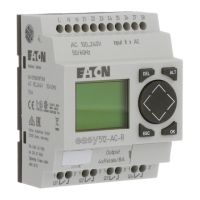9. easyE4 inside
9.1 Program execution
9. easyE4 inside
9.1 Program execution
When using the LD or FBD programming language, the program will be executed as fol-
lows:
l The program will start by reading the hardware's input states and writing them to
the image table register. After this, it will run through network 01 in its entirety and
not only process all function blocks and logic circuitry, but also write the state of all
mapping assignments (Q, M, etc., and function blocks) to the image table register. It
will then run through the next network (if any networks are jumped over, they will
not be run through). Once the last network has been run through, the resulting out-
put states will be transmitted to the hardware and the cycle will start again.
In the Programming language ST
l The program will start by reading the hardware's input states and writing them to
the image table register. After this, it will execute the statement and instruction list
from top to bottom and modify the image table register every time there is a map-
ping assignment (if any statements or instructions are jumped over, they will not be
executed). The cycle will then start again.
When using the EDP (easy Device Programming) programming language
l This programming language is the same one that can be use for programming dir-
ectly on the base device. The way in which this program will be executed is
identical to the way programs are executed on the easy500, easy700, and easy800
devices.
In conventional control systems, a relay or contactor control processes all the rungs in
parallel. The speed with which a contactor switches is thus dependent on the com-
ponents used, and ranges from 15 to 40 ms for relay pick-up and drop-out.
Read
process
image
Process circuit
diagram and func-
tion
block diagram
Write
process
image
Local
inputs
Local
outputs
Function
block
inputs
Function
block
outputs
Markers Markers
Diagnostics
information
NET sta-
tions out-
Table 87: Cycle timeeasyE4
easyE4 11/18 MN050009 EN www.eaton.com
501
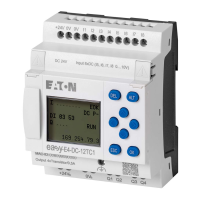
